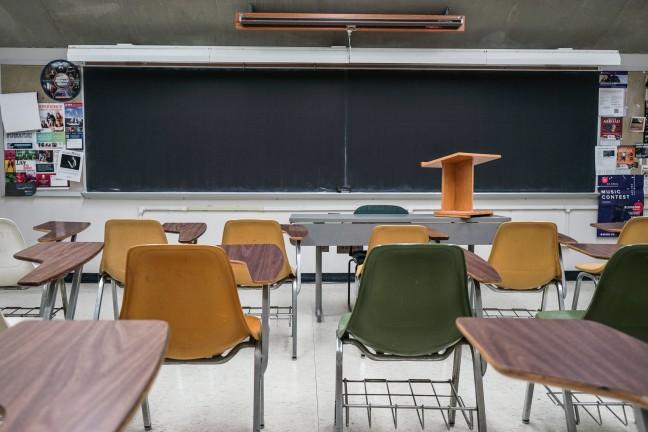University of Wisconsin psychology professor James Li and graduate student Ryann Morrison recently published a study examining the concentration of black youths in the American juvenile justice system and the development of antisocial behaviors that led them there.
The results found that supportive parenting reduced the risk of an adolescence-peaked atypical antisocial behavior trajectory for both white and black Americans. However, the study concluded that school connectedness was less protective for black Americans because it only predicted a lower risk of adolescence-peaked antisocial behaviors for them.
Morrison said the existing literature includes predominantly white samples, which leaves gaps in understandings of atypical antisocial behavior. But while this research has mainly focused on white youths, it is their black counterparts that are overrepresented in the criminal justice system.
The Sentencing Project found that juvenile facilities, residential treatment centers, detention centers, training schools, juvenile jails and prisons held 48,043 youth as of October 2015. Forty-four percent of these youth were African American, even though they makeup only 16 percent of all youth in the United States.
Li and Morrison’s research study attempted to diversify established research and examine behaviors that can lead youths, specifically African American children, to display antisocial behaviors that often lead them to the criminal justice system, Morrison said.
Brushed aside: Students, faculty struggle to define what ethnic studies mean at UW
The authors used four waves of data collected from participants in the National Longitudinal Study of Adolescent to Adult Health. Comprehensive behavioral, health and demographic data collected from 10,762 white youth and 4,091 black youth participants, their friends, families and teachers were included.
The study began when each participant was 13 years old and continued until they reached age 32. It measured the trajectories of antisocial behaviors in white and black youths.\
According to a UW report of the study, the researchers included “non-violent rule-breaking such as stealing or damaging property, and physical aggression, such as engaging in fights or pulling a weapon on another person” in their characterization of anti-social behavior. The researchers said such behavior is linked to depression, employment challenges and criminal behaviors later in life.
Li and Morrison identified four developmental trajectories of antisocial behavior in their research. The first of these is “negligible,” which is characterized by little to no demonstration of antisocial behaviors from adolescence through adulthood. The second trajectory, “adolescence-peaked,” shows a rise in antisocial behaviors between ages 13 and 16, followed by rapid decline.
There are two “chronic groups,” which include low and high persistence. “Low persistence” is demonstrated by relatively low levels of antisocial behaviors that persist into adulthood, and “high persistence” is characterized by higher levels of antisocial behavior into adulthood.
The two researchers examined environmental factors of these antisocial behavior trajectories, specifically focusing on how supportive parenting and school connectedness affect behavioral developments. By observing how the youths’ antisocial behaviors progressed based on these factors, they were able to measure the different rate at which this occurred in white youths versus black youths.
“Our results suggest that feeling connected in school is pretty protective for white kids, but that pattern is not repeated in African American kids,” Morrison said. “African American kids don’t reap the same benefits from their school environments as white kids.”
UW researcher finds racial segregation increases disparity between black, white homicide rates
The study’s abstract noted that the findings may reflect the complex social dynamics between race and schools in the development of antisocial behaviors. Morrison said African American children do not always have the privilege of growing out of social dynamics like white children do.
“As an African American youth, you are more likely to get suspended from school, interact with police or go to juvenile detention,” Morrison said. “Once you’re in the system, it can be very difficult to get out of the system …White kids are more likely as adolescents to grow out of it and African American kids are more likely to fall into the chronic group.”
Morrison and Li said that the earlier atypical antisocial behaviors are observed, the better the chances an intervention may be possible.
They also encourage researchers to be more culturally and racially conscious when choosing their samples, so as to gather more diverse information in studies like this one.
“Our results suggest that we should put more consideration into cultural values and differences, try to foster more positive interactions between students and teachers, and consider the multitude of ways in which racial-ethnic differences manifest in antisocial behaviors,” Morrison said. “Future studies may benefit from including diverse samples to better understand the development of antisocial behaviors and relevant cultural factors.”














